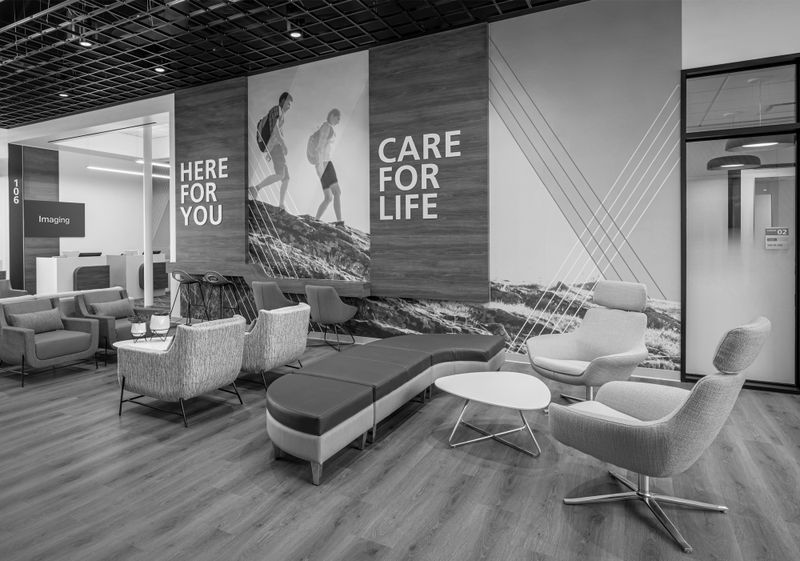
A smoother journey
Simplify complex healthcare projects to yield clear, confident patient spaces
Hospitals never stand still. Renovations unfold beside active care, and progress must happen without pause. Sigange implementation is no exception, from specs to installation, every signage project crosses a dozen hands – designers, fabricators, contractors, administrators – all working toward clarity in a complex place. If that coordination stumbles, confusion follows. But with the planning and the right tools, it doesn’t have to. When procurement, fabrication, and installation align, the result is care you can see and feel in every corridor.
KEY CONTRIBUTOR:
Keri Fate
Director of Healthcare
Seeing the full picture
In modern healthcare design, the expectations have changed. Facilities no longer aim merely for function – they aim for comfort. The industry’s shift toward hospitality-inspired environments has redefined what “good design” means. From flooring and furniture to artwork and signage, every touchpoint now plays a role in healing. Research shows that calm, intentional spaces can reduce stress for patients and families – and that includes how people find their way.

That’s what makes coordination so critical. Signage is rarely anyone’s first priority during construction, yet it’s often the first thing patients see. When color palettes drift or wayfinding gets misaligned, the experience suffers. And when the signage team joins the process too late, small delays become big disruptions.
When foresight shapes experience
During a recent hospital expansion, the project team worked closely with facility leaders before construction began to plan a temporary relocation of the main entrance. Together, they designed a hospital-wide wayfinding system that guided visitors from every arrival point to the new entry, from parking lots to drop-off zones.
Inside, temporary branded graphics furthered the wayfinding effort. All along the way, familiar explanatory messages like “Pardon our Mess” and “Coming Soon” were paired with architect’s renderings that gave advanced glimpses of the new facility. This intentional approach not only guided patients and visitors but also gave them a sense of involvement in the process, emphasizing the promise of progress rather than inconvenience. What could have felt like frustration instead became a reassuring, purposeful experience.
This is what it looks like when planning turns into empathy, which translates into patient confidence.
Managing complexity before it manages you
Healthcare signage projects are intricate by nature. Architects, contractors, electricians, signage vendors, and administrators all move on different schedules. A single misstep like an approval delay or a color change can throw off an entire installation.
The hospitals that avoid those pitfalls share one trait: they start with clarity. Every successful project begins with a shared understanding of scope, budget, and timeline, and a single project lead who connects every trade and decision-maker. That structure keeps communication flowing, expectations clear, and surprises to a minimum.
Technology that connects the dots
Technology has quietly transformed how hospitals coordinate complex projects. Tools like SignAgent let stakeholders log in, view drawings, and make live edits to sign types or copy. Real-time updates replace endless email threads and version confusion. Approvals that once took weeks now happen in days.

And when paired with platforms like Teams and Zoom, project meetings no longer require cross-state travel. Designers, contractors, and administrators can collaborate virtually with the same visibility as being on-site. The result: faster decisions, fewer errors, and smoother fabrication timelines.
One regional health system recently used these digital tools to manage a multi-phase renovation. With every approval, spec, and location tracked in one place, they finished ahead of schedule, without a single reprint or field correction.
What success feels like
After a well-run project, hospital teams often describe the same things: efficiency, responsiveness, control. They value having a dedicated project team that communicates clearly and anticipates what’s next. They feel guided through the process.
As one client shared, “It was the first time we felt fully in control. Everything just worked.”
That kind of confidence doesn’t happen by chance. It’s built through planning, trust, and partnership. And when patients feel calm, visitors feel cared for, and staff can focus on what matters most. And that creates a smoother journey for everyone.
See Our Work in Healthcare



